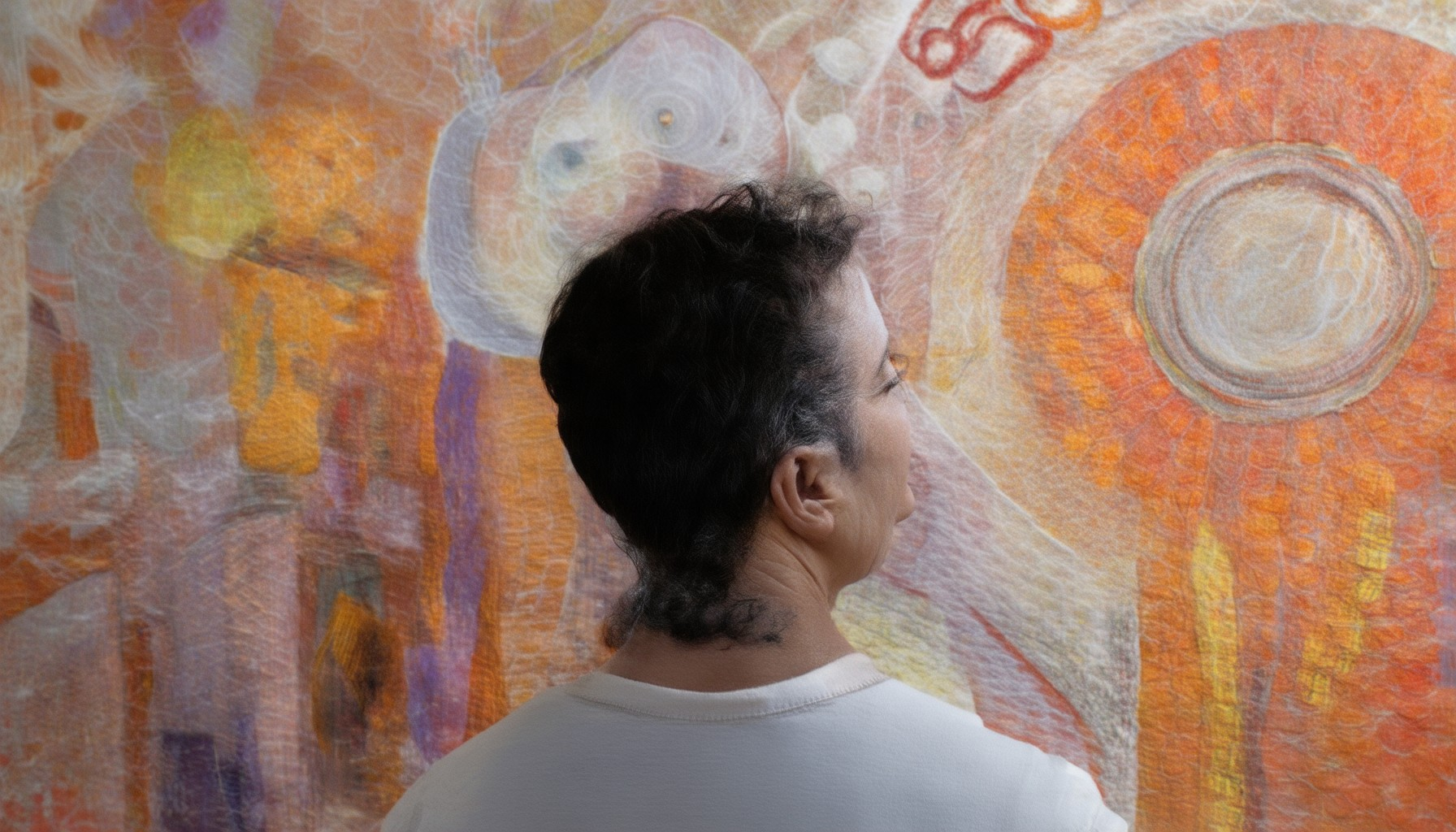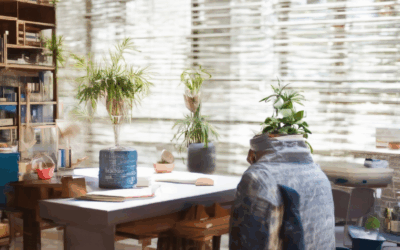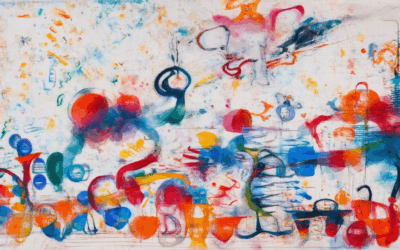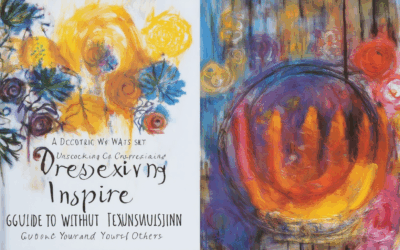Art has long served as a mirror, reflecting the emotions, thoughts, and experiences of humanity. At its core, art is more than mere brushstrokes or colors—it’s a window into the soul, offering insights that resonate deeply with each individual. The profound connection between art and personal insights lies in its ability to transcend boundaries, speaking to the universal while holding unique significance for those who encounter it. Whether through the strokes of a masterpiece or the raw expressions of a child, art has the power to unlock hidden layers of our inner worlds, revealing stories that may never be spoken aloud. This article delves into the intricate dance between art and personal insights, exploring how it shapes our understanding of ourselves and the world around us.
Key Takeaways
- Art facilitates self-discovery and authenticity by allowing individuals to explore their true selves and express their unique perspectives.
- Engaging with art serves as a therapeutic outlet, aiding in emotional processing and personal healing through creative expression.
- Art enriches storytelling and identity formation, helping individuals document their lives and build a rich, personal narrative.
- Exposure to art inspires creativity and motivation, driving personal growth and fostering a sense of purpose and achievement.
- Art fosters community and connections, creating opportunities for collaboration and building meaningful relationships with others who share similar passions.
- Art fulfills various personal functions, including self-expression, emotional release, identity exploration, and providing aesthetic experiences that enrich our lives.

Understanding “inSight” in Art
The term “inSight” in art refers to the deep understanding and meaningful connection between the viewer and the artwork, often achieved through introspection and cultural awareness.
Key Themes of “Art inSight”
- Viewer-Artist Connection: The book emphasizes the dynamic relationship between the observer and the artwork, encouraging viewers to interpret art personally and find universal meanings.
- Cultural Exploration: It delves into the cultural contexts behind artworks, helping readers appreciate diverse perspectives and stories embedded in art history.
- Art History and Evolution: By examining significant movements and artists, “Art inSight” provides insights into how art has evolved and reflects societal changes over time.
Patrick Mettraux’s creative blog explores similar themes, offering storytelling and artistic reflections to inspire creativity and foster a deeper appreciation for art.
For more insights, visit Patrick Mettraux and explore his artistic reflections and creative processes.
How Does Art Reflect People’s Experiences?
Art serves as a powerful medium for expressing and conveying human emotions, cultures, and histories. It offers a unique window into the collective and individual experiences of people across different times and places. Here’s how art mirrors the lives and stories of those who create it:
- Personal Narratives :
Art often functions as a personal diary or manifesto, allowing creators to document their thoughts, feelings, and observations. Painters, writers, and musicians frequently use their work to explore their inner worlds, turning subjective experiences into something universal. For instance, a portrait might capture the artist’s mood, while a poem could articulate their struggles or joys. - Cultural Reflection :
Art reflects the values, beliefs, and traditions of a culture. From ancient cave paintings to contemporary installations, art often serves as a mirror for societal norms and practices. It can highlight what a culture holds dear, such as religion, family, or nature, while also pointing out its flaws or challenges. - Historical Documentation :
Artists have historically played a role in preserving history and documenting events. Whether it’s the realistic depictions of war in paintings or the symbolic representations of social movements in sculptures, art provides a visual record of significant moments in time. It allows future generations to connect with the past. - Emotional Expression :
Art is a universal language for emotions. Through colors, shapes, and symbols, artists communicate fear, joy, anger, or love. A sculpture might evoke nostalgia, while a song could bring listeners to tears. Art transcends boundaries, resonating with people from all walks of life. - Societal Critique :
Many artists use their work to critique society. This can take the form of satirical cartoons, provocative street art, or thought-provoking films. By highlighting inequalities, injustices, or absurdities, these works challenge viewers to reconsider their own beliefs and behaviors. - Therapeutic Outlet :
For many, art is a therapeutic process. Creating art can help individuals process trauma, express pent-up emotions, or find meaning in life. It acts as a safe space for self-expression, allowing people to explore their identities and navigate complex emotions. - Identity Formation :
Art plays a crucial role in shaping personal identity. Children draw pictures that reflect their understanding of the world, teenagers experiment with styles to find their voice, and adults revisit themes that resonate with their life experiences. Art is often a journey of self-discovery. - Universal Themes : Despite cultural differences, art often touches on universal themes like love, loss, and humanity. These timeless subjects allow art to transcend cultural barriers, fostering connections between diverse communities.
- Evolution Over Time :
As societies evolve, so does the art that represents them. From the abstract expressions of the 20th century to the digital art of today, art adapts to reflect the changing world. It mirrors technological advancements, shifts in social norms, and global interconnectedness. - Inspiration and Influence :
Art doesn’t just reflect experiences—it also inspires them. A masterpiece can spark curiosity, ignite passion, or provoke change. It invites viewers to engage with the artwork on a deeper level, often leading to new perspectives or personal growth.
In essence, art is a dynamic and multifaceted medium that captures the essence of human existence. It bridges the gap between the internal and external worlds, offering a unique lens through which we can understand ourselves and our surroundings.

What is Personal Interpretation in Art?
Personal interpretation in art refers to the unique way an individual perceives and makes sense of visual works. Unlike objective analysis, which focuses on factual details, interpretation delves into the deeper meanings and emotions conveyed by the artwork. This process is inherently subjective, shaped by personal experiences, cultural background, and the viewer’s perspective.
Why Is Art Interpretation Subjective?
- Subjectivity : Different people bring varying life experiences and emotional contexts to their viewing of art, leading to diverse interpretations.
- Multiple Perspectives : Artists often use techniques like symbolism or metaphor to invite multiple layers of meaning, encouraging varied interpretations.
- Context Matters : The setting in which art is viewed, whether in a museum, gallery, or private space, can influence how it is perceived.
Techniques Influencing Interpretation
Artists employ specific strategies to guide or influence interpretation:- Symbolism : Using recognizable symbols to evoke universal feelings or ideas.- Metaphor : Drawing parallels between abstract concepts and visual elements to convey complex ideas.- Color and Composition : Utilizing color palettes and spatial arrangements to elicit specific emotional responses.
Role of Context and Cultural Background
The interpretation of art is deeply influenced by:- Historical Period : Art from different eras reflects the societal norms and values of their time, affecting how they are perceived today.- Cultural Differences : Interpretations can vary widely across cultures due to differing traditions and belief systems.- Artist’s Intentions : While not always known, understanding the artist’s purpose can provide valuable insight into intended meanings.
Examples of Interpretation in Action
Consider the painting The Starry Night by Vincent van Gogh. Different viewers might interpret the swirling stars and brushstrokes as:- A representation of the cosmos and human wonder.- A depiction of mental illness and the chaos of the artist’s mind.- An exploration of faith and spirituality.
Each interpretation offers a unique lens through which the artwork is experienced.
Technology’s Impact on Interpretation
With advancements in digital tools, artists can create interactive installations that challenge traditional interpretation methods. Virtual reality (VR) exhibitions, for instance, allow viewers to immerse themselves in artworks, potentially altering how they are perceived.
Conclusion
Personal interpretation in art is a dynamic and evolving process, allowing for endless possibilities of meaning and connection. It underscores the importance of empathy and curiosity in engaging with art, inviting us to explore beyond the surface and discover deeper truths.

What is the Personal Role of Art?
Art plays a profound personal role in shaping who we are and how we navigate our lives. It serves as a powerful tool for self-expression, exploration, and growth. Beyond mere creation, art acts as a mirror reflecting our inner worlds, helping us understand ourselves more deeply.
1. Self-Discovery Through Art
Engaging in art allows individuals to tap into their authentic selves. By exploring various mediums, people uncover hidden talents, passions, and emotions. This process fosters introspection, enabling greater self-awareness and a clearer understanding of one’s identity. As noted by experts, art is a gateway to authenticity, helping individuals define their unique voices.
- Exploring new artistic mediums can reveal unexpected abilities and interests.
- Artistic expression often provides a safe space for exploring complex emotions.
- Creating art can lead to significant personal growth and self-realization.
2. Emotional Processing and Therapy
Art functions as a therapeutic medium, offering a non-verbal means of communication. It enables individuals to process and release pent-up emotions, reducing stress and fostering emotional well-being. Studies suggest that art therapy can aid in overcoming trauma and negative experiences, making it a valuable tool for personal healing.
- Art can serve as a coping mechanism for dealing with challenging life situations.
- Creating art often leads to a sense of accomplishment and emotional release.
- Art-based therapies are increasingly recognized for their mental health benefits.
3. Storytelling and Identity Formation
Art allows individuals to tell their stories, preserving memories and shaping their identities. Through painting, sculpture, or digital media, people construct narratives that reflect their lived experiences. This storytelling process enriches personal history, offering a unique perspective on life’s journey.
- Personal art projects can document meaningful life events and milestones.
- Storytelling through art creates a visual record of individual achievements.
- Articulating one’s story can enhance self-esteem and historical awareness.
4. Inspiration and Motivation
Art inspires individuals to pursue their passions and set goals. Observing masterpieces or engaging in creative processes can ignite a sense of purpose and drive. This inspiration extends beyond art itself, spilling over into other areas of life, fostering creativity and ambition.
- Art can spark curiosity and curiosity about life’s possibilities.
- Exposure to great art works can elevate personal aspirations and achievements.
- Engaging with art can boost confidence and encourage risk-taking.
5. Building Community and Connections
Art transcends individual boundaries, fostering connections with others who share similar passions. Participating in group exhibitions or collaborative projects strengthens social ties, creating a sense of belonging. This communal aspect enriches personal relationships and broadens cultural understanding.
- Joining art communities can lead to lasting friendships and collaborations.
- Participating in collective art projects promotes teamwork and empathy.
- Art-related activities often attract like-minded individuals with shared interests.
By embracing art, individuals unlock new dimensions of their personalities, explore their inner worlds, and connect with others on a deeper level. Art is not just an activity—it’s a transformative journey that enriches life, fostering personal growth and a sense of purpose.
How Does Art Influence You as a Person?
Art has a profound impact on our lives, shaping who we are and how we interact with the world. It serves as a mirror reflecting our emotions, fostering self-discovery, and inspiring personal growth. Here’s how art influences us:
- Expressing Emotions and Thoughts: Art provides a medium for emotional release and intellectual exploration. Whether painting, sculpting, or engaging with digital art, we can externalize complex feelings and ideas that might otherwise remain unspoken. This process allows for introspection and a deeper understanding of oneself.
- Fostering Creativity and Imagination: Art sparks creativity, encouraging us to think outside conventional boundaries. By exploring new techniques and perspectives, we develop innovative problem-solving skills and unlock fresh ways of approaching challenges in daily life.
- Building Empathy and Understanding: Through art, we gain insight into diverse perspectives and cultures. This empathy extends beyond art appreciation, influencing our interactions with others and fostering a more inclusive society.
- Personal Growth and Healing: Art acts as a therapeutic tool, helping individuals navigate emotional struggles. Creative expression can alleviate stress, boost confidence, and provide a sense of accomplishment, contributing to overall well-being.
- Nurturing Connection and Community: Art bridges people across generations and geographies, creating shared experiences and fostering connections. Communities often gather around art exhibits, performances, or workshops, strengthening social bonds and cultural identity.
By embracing art, we unlock a channel for self-expression, growth, and connection. It enriches our lives, making us more empathetic, creative, and fulfilled. Explore Patrick Mettraux’s blog for more insights on creativity and inspiration: Patrick Mettraux .

What is a personal function of art?
Art serves various personal functions, often going beyond mere aesthetics. One primary role is self-expression , allowing individuals to communicate their thoughts, emotions, and experiences. Through painting, sculpture, or even digital media, people can share their unique perspectives and explore their inner worlds.
Another key function is emotional release . Art can act as a cathartic outlet, helping individuals process complex feelings or traumas. Whether through music, dance, or visual arts, creating or appreciating art can provide emotional relief and foster introspection.
Additionally, art plays a role in identity formation . Creating art often helps individuals define themselves, explore cultural heritage, or connect with their roots. This can lead to a deeper understanding of one’s place in the world and how they want to be perceived.
Moreover, art can fulfill a aesthetic experience , simply for its beauty or intellectual stimulation. Many find joy in the symmetry of a painting, the complexity of a musical composition, or the intricate details of a sculpture.
Ultimately, art’s personal functions extend far beyond its creation. It can inspire, challenge, and transform individuals, making it a powerful tool for personal growth and self-discovery.
Conclusion
Art’s personal functions are deeply intertwined with our individual and collective identities. From expressing emotions to fostering introspection, art serves as a dynamic medium for personal transformation and self-awareness.





0 Comments